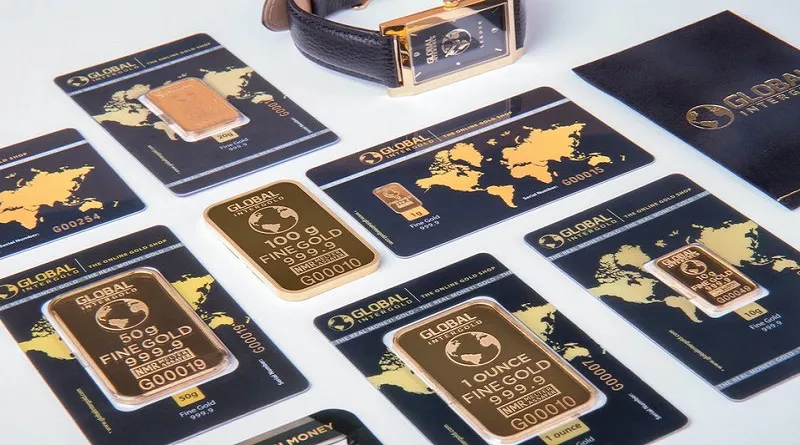In the financial world, gold has long been considered a safe-haven asset and a store of value. Investors often seek ways to gain exposure to the precious metal without owning physical gold. Gold futures contracts provide an attractive avenue for traders and investors to participate in the gold market’s price movements without the need for direct ownership. In this article, we will explore how much one gold futures contract is worth, the factors influencing its value, and the mechanics involved in trading these contracts.
1. Defining the Value of One Gold Futures Contract
A gold futures contract represents a commitment to buy or sell a specific amount of gold at a predetermined price and date in the future. The value of one gold futures contract is determined by several factors, including the current spot price of gold, the contract’s size, and the prevailing market conditions. The most actively traded gold futures contract represents 100 troy ounces of gold. Therefore, to calculate the value of one gold futures contract, one must multiply the current spot price of gold per troy ounce by 100.
2. Influencing Factors on the Value of a Gold Futures Contract
a. Spot Price of Gold
The spot price of gold plays a pivotal role in determining the value of a gold futures contract. The spot price reflects the current market price of physical gold for immediate delivery. As the spot price fluctuates, the value of the gold futures contract also changes, providing opportunities for traders to profit from these price movements.
b. Market Sentiment
Market sentiment, influenced by factors such as geopolitical events, economic indicators, and inflation expectations, can significantly impact the demand for gold futures contracts. During times of economic uncertainty or geopolitical tensions, investors often seek the safety of gold, leading to increased demand and higher contract values.
c. Interest Rates
Changes in interest rates can affect the value of gold futures contracts. When interest rates rise, the opportunity cost of holding non-yielding assets like gold increases. As a result, demand for gold may decrease, leading to lower contract values.
3. Trading Mechanics of Gold Futures Contracts
a. Standardization
Gold futures contracts are standardized agreements traded on organized exchanges like the Chicago Mercantile Exchange (CME) and the Intercontinental Exchange (ICE). Standardization ensures uniformity in contract size, delivery months, and other terms, facilitating liquidity and ease of trading.
b. Leverage and Margin
One of the key attractions of gold futures trading is leverage. To enter a gold futures contract, investors are required to deposit a margin with their brokerage. The margin is a fraction of the total contract value, allowing traders to control a more substantial position than their initial investment. While leverage amplifies potential gains, it also increases the risk of significant losses.
c. Contract Expiration and Rollover
Gold futures contracts have specific expiration dates. Prior to expiration, traders have the option to either settle the contract by taking physical delivery of gold or offsetting their position by entering an opposing trade. Many market participants choose to “roll over” their contracts by closing the expiring position and simultaneously opening a new one with a further expiration date, allowing them to maintain exposure to the gold market.
4. The Importance of Gold Futures Contracts
a. Hedging
Gold futures contracts play a vital role in risk management for market participants involved in the production, consumption, or distribution of gold. Gold miners, jewelry manufacturers, and other industry players can use futures contracts to hedge against potential price fluctuations, ensuring price stability and predictability in their operations.
b. Speculation
Traders and investors are drawn to gold futures contracts for speculative purposes. They can profit from short-term price movements in the gold market by taking long or short positions. Speculation adds liquidity and depth to the futures market, contributing to price efficiency and discovery.
c. Portfolio Diversification
Gold is often considered a safe-haven asset that tends to perform well during periods of economic uncertainty or market turbulence. Investors include gold futures contracts in their portfolios to diversify risk and act as a hedge against potential downturns in other asset classes.
Conclusion
One gold futures contract represents a commitment to buy or sell a specific amount of gold at a predetermined price and date in the future. The value of the contract is influenced by the spot price of gold, market sentiment, and interest rates. Gold futures contracts offer traders and investors an avenue to participate in the gold market’s price movements without direct ownership of physical gold. By understanding the mechanics and factors influencing the value of gold futures contracts, market participants can make informed decisions and utilize these financial instruments to manage risk, speculate on price movements, and diversify their investment portfolios. However, it is crucial for individuals to thoroughly research and comprehend the risks involved before engaging in gold futures trading, as leveraged trading can result in significant gains or losses.

